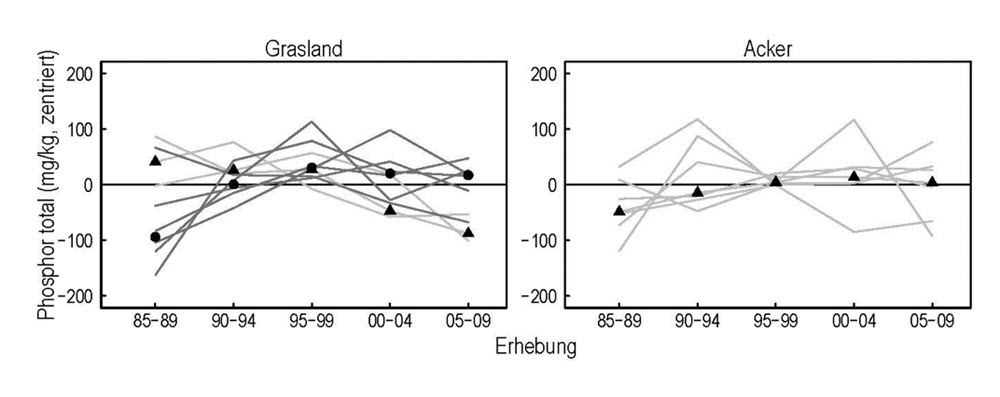The organic matter plays a key role in the quality of soil. It significantly influences how well the soil can regulate the water balance, how well the nutrient cycles function, how biologically active the soil is, as well as for which agricultural functions the soil is most suitable. In the context of climate change, it is also interesting to see if soils lose or build up carbon, because this corresponds to CO2 being released or bound, respectively. Analyses from the approximately 30 arable sites in the NABO monitoring network indicate:
Only small changes in the topsoil content of mineral arable soils have occurred over the last 30 years (Gubler et al., 2019). What is unclear is whether this will remain so in the future and what influence global warming will have. NABO has an insubstantial data basis available for organic soils (such as former swamps). However, it is known that they permanently lose carbon under agricultural use.
Pollutants
Pollutants have always been an important topic for NABO. On the one hand, pollutants mentioned in the VBBo such as heavy metals, Dioxins and Furans, PAH and PCB. NABO was able to show that the background contamination is generally harmless here, with the exception of certain hotspots such as geogenic («natural») exposures or Copper in vineyards and in the cultivation of vegetables. Decreasing levels of certain substances such as lead and PAK indicate that airborne inputs have decreased and that the measures taken to protect the environment have had an impact. On the other hand, NABO also investigates «new», previously poorly investigated groups of substances, such as currently pesticides.
Nutrient content in agricultural soils
Agricultural food production is dependent on the supply of nutrients such as nitrogen, phosphorous and potassium in the form of fertiliser. A surplus has a negative effect on the ecosystem, such as groundwater contamination or eutrophication of water bodies. Through the use of fertilisers and other additives, undesired substances often end up on fields: mineral phosphorous fertilisers may be contaminated with Cadmium and Uranium, manure may be loaded with copper, zinc and antibiotic residues, compost can contain microplastics.
The accumulation of nutrients or pollutants in the soil heavily depends on the agricultural management. In the case of intensively used grasslands, we frequently observe continuous increases in copper and zinc. The phosphorous contents vary greatly in their development, depending on the land use, as shown in the figure below.









